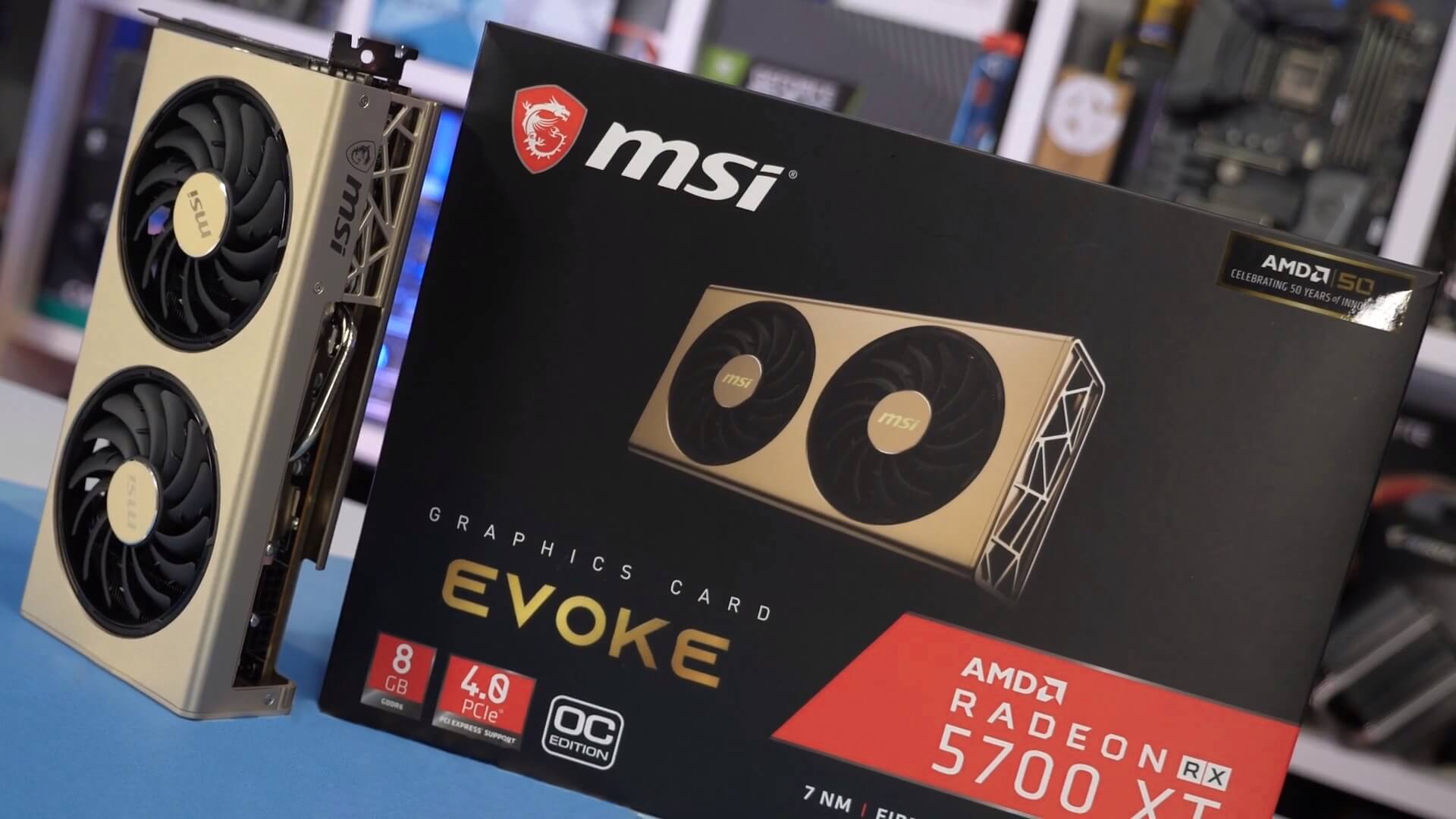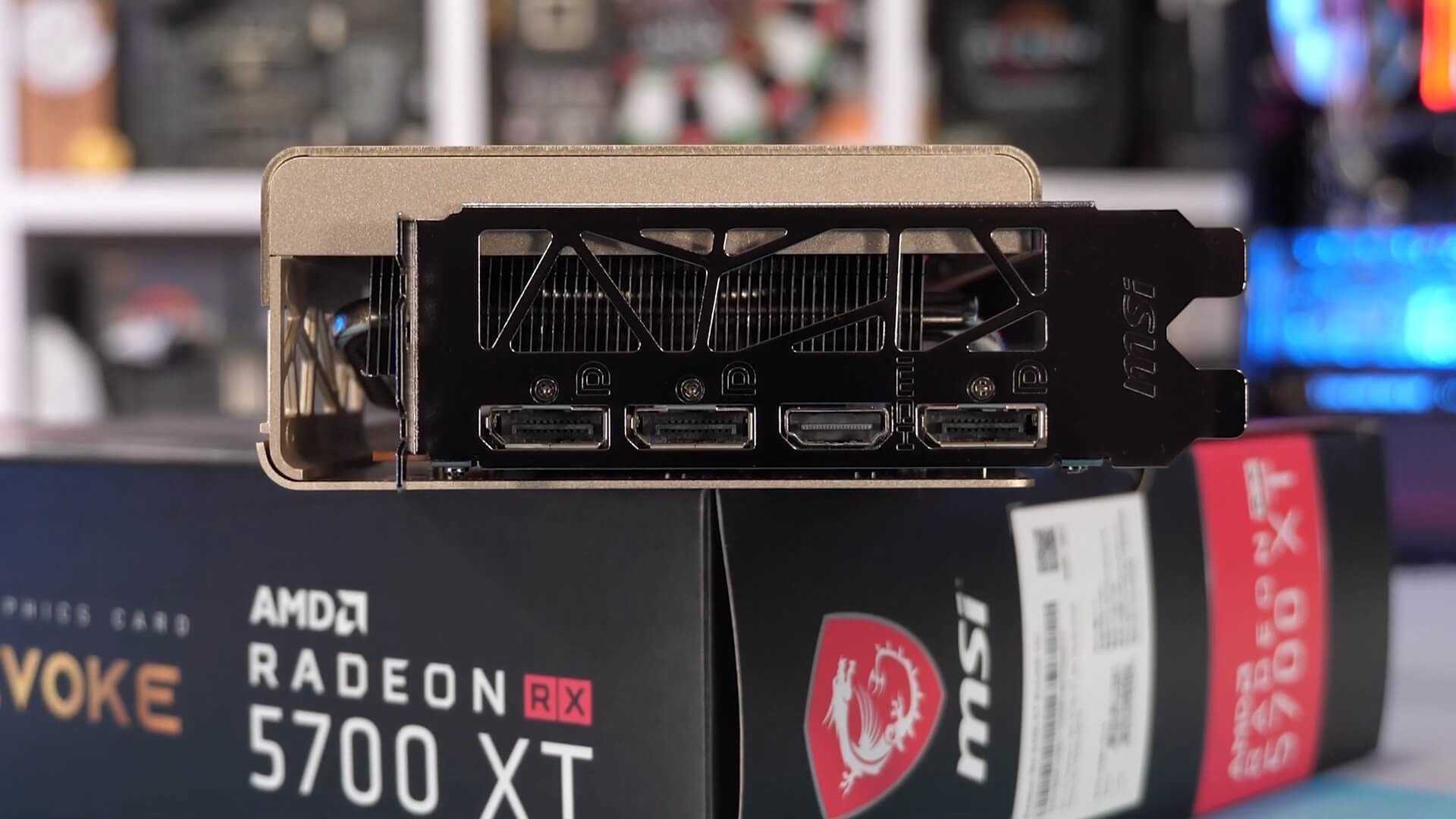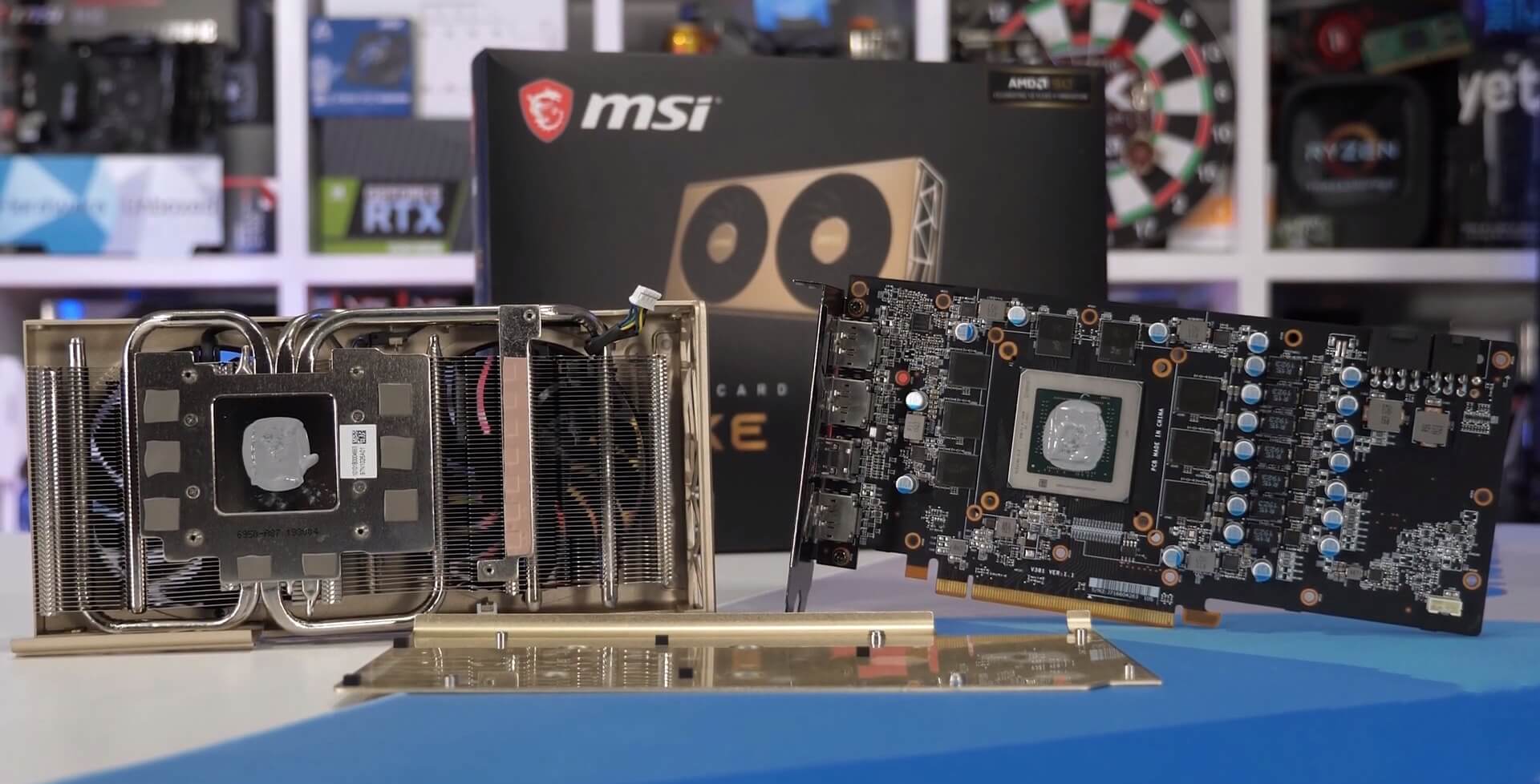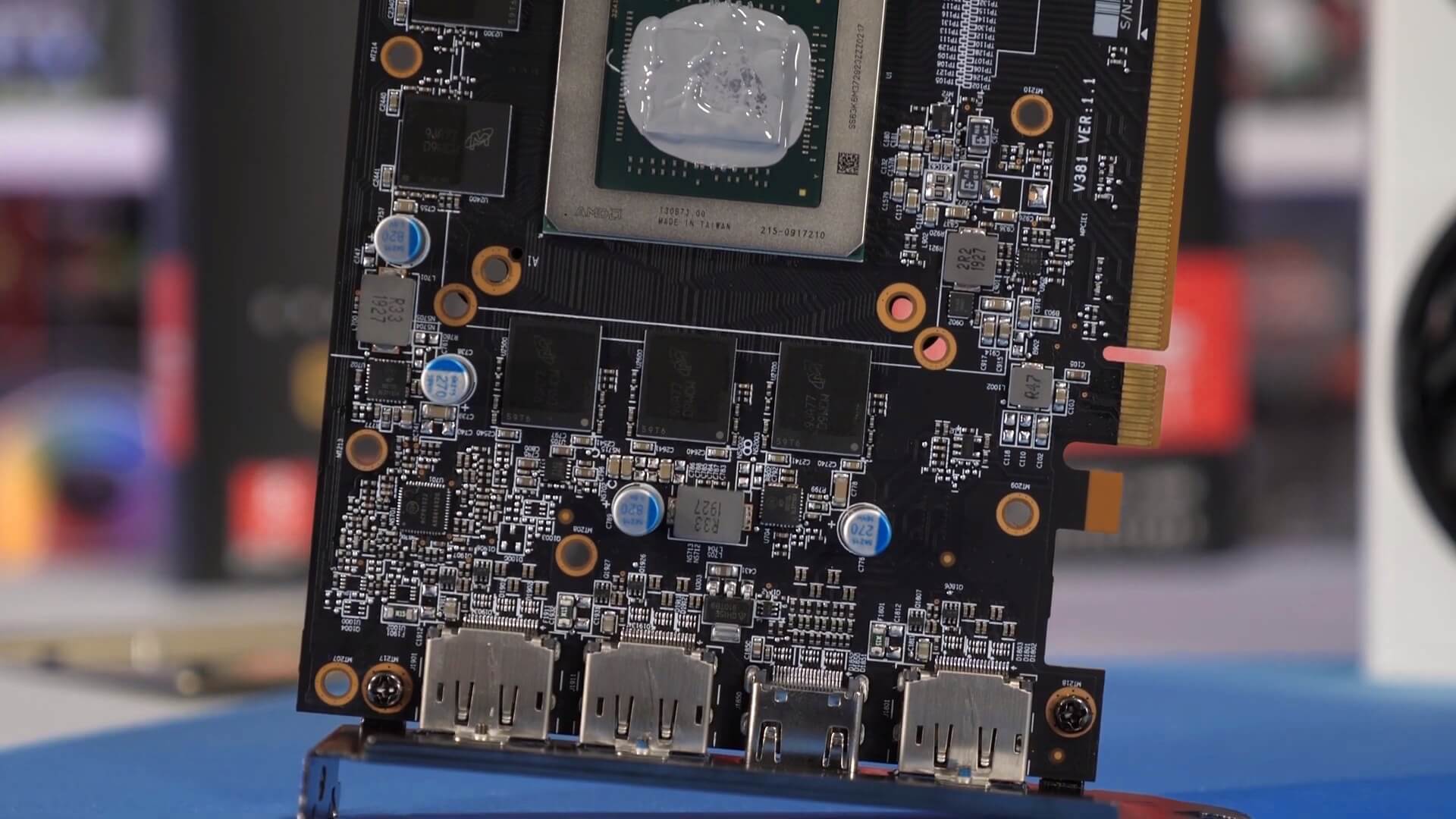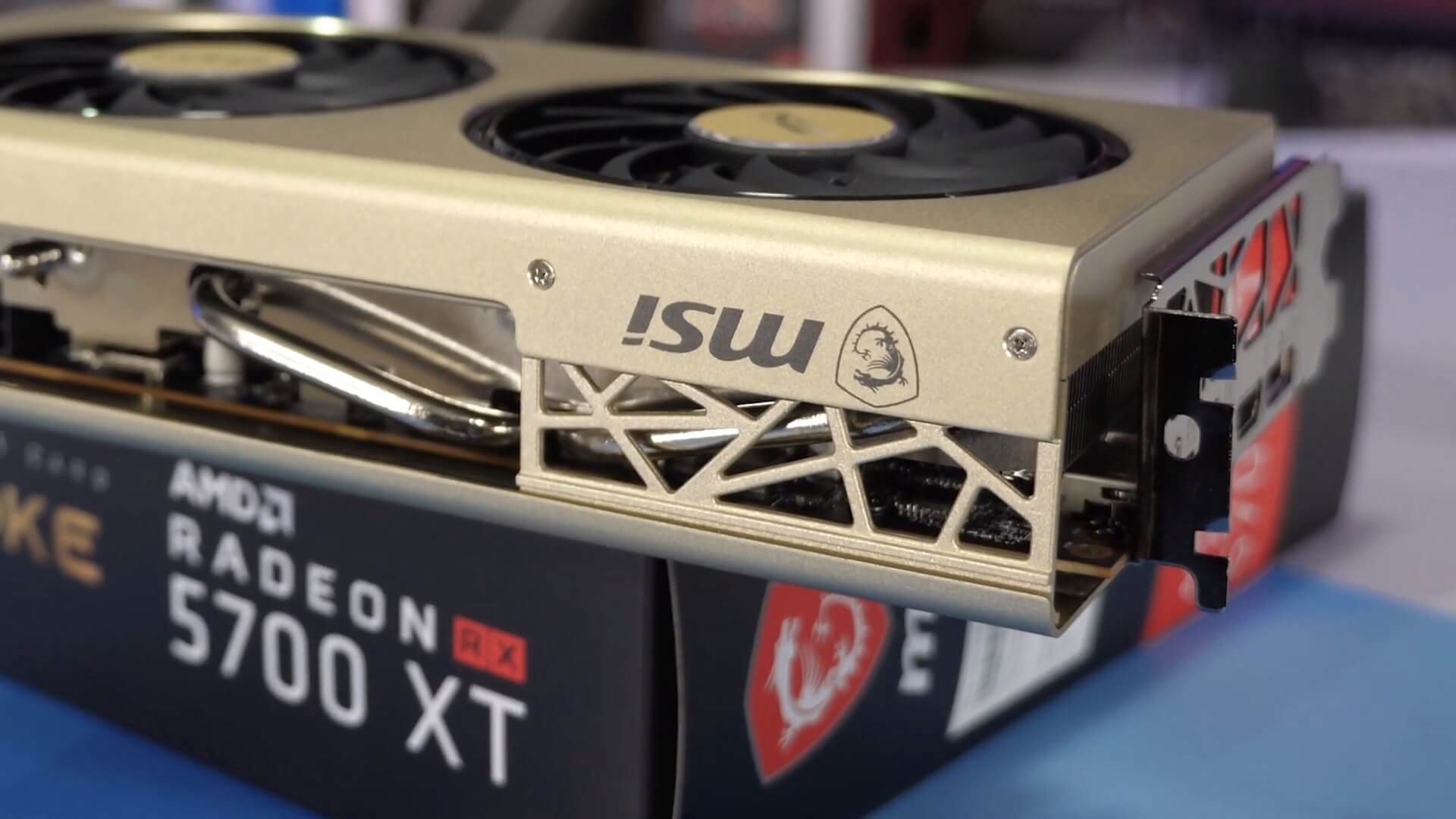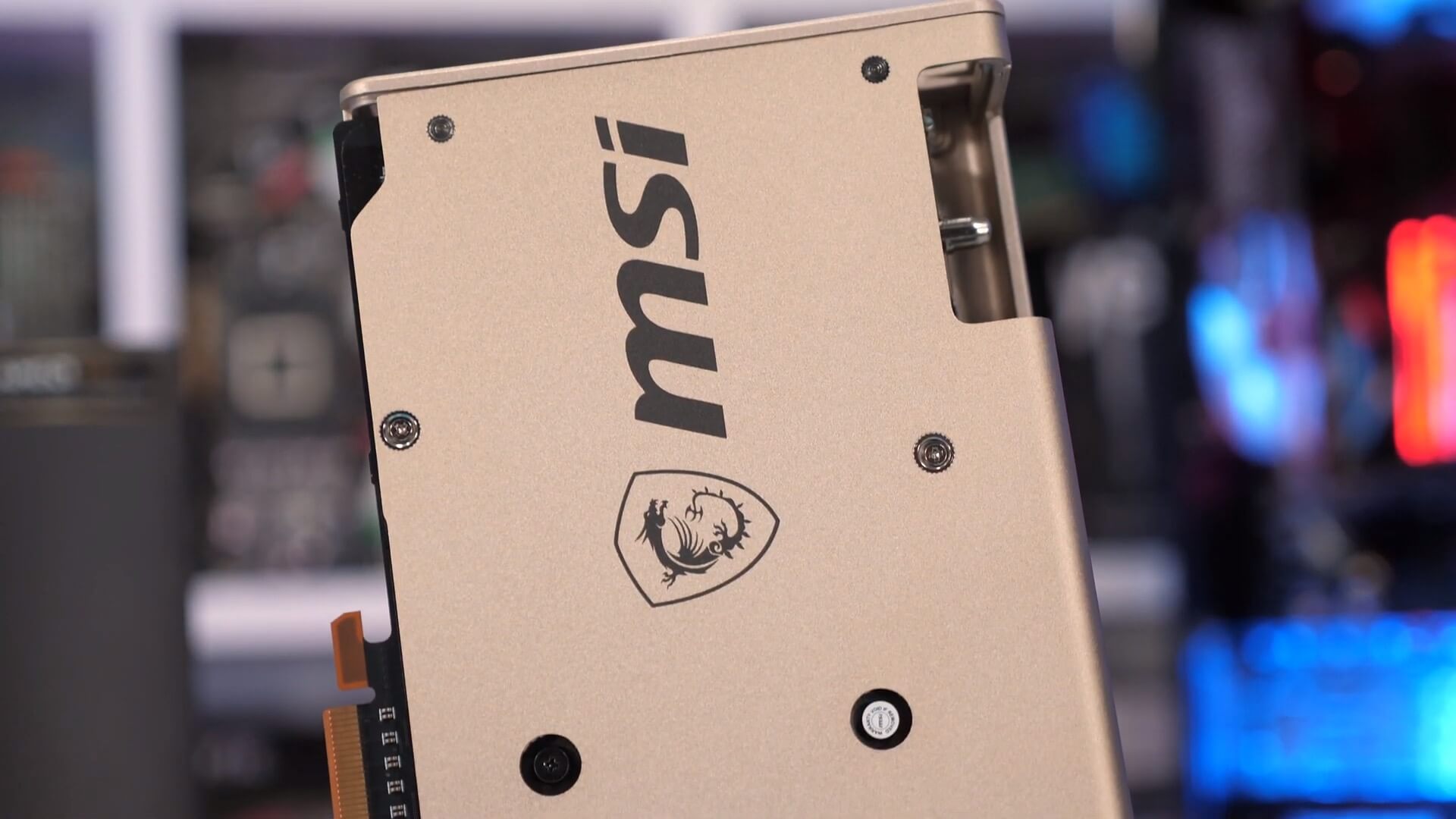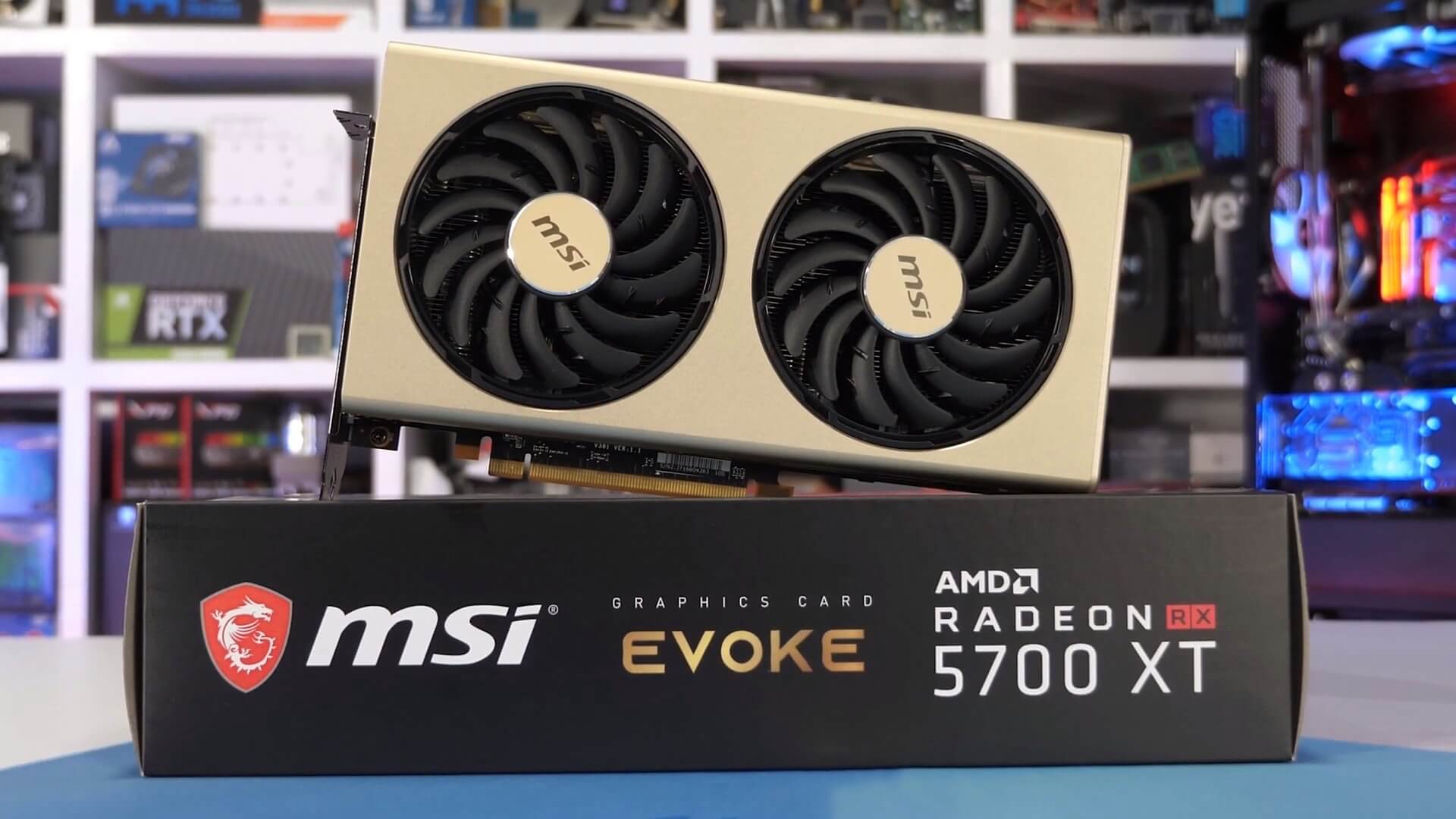When we reviewed the new Radeon RX 5700 XT GPU about a month ago we found it in a sweet spot at $400, delivering better value than more affordable products such as the original RTX 2060 and the GTX 1660 Ti. Not to mention the 5700 XT gets you near GeForce 2070 Super performance at a hefty discount.
That was a launch day review, and thus we speculated that availability would be key, and thankfully in the past few weeks we've seen AMD and partner makers stocking shelves with reference $400 5700 XT's and $350 5700's. So far so good, and now we have our first custom partner cards making it to retail.
Today we are reviewing the MSI RX 5700 XT Evoke OC. We'll go over the basics as usual with a focus on the card's design, we'll briefly look at performance which shouldn't be anything too different than what we saw before from the same GPU, before diving into operating temperatures, power consumption and overclocking.
Design-wise... it's gold. You've probably got that at this point. But color choice aside, it's a nice looking card with an aluminum backplate that wraps around the side of the card. There's another aluminum cover on the front side which gives the fan shroud a premium look and feel. The only visible plastic besides the fans are the triangular cut out bits found on the end and side of the card, they look neat. Overall, sleek looks with no RGB lighting.
The card measures 235 mm long making it reasonably compact, though it does stand 115 mm tall and is rather wide at 50 mm. Depending on your constraints if you're building an ITX rig, this may or may not work for you. It's not too heavy, tipping the scales at 890 grams.
The I/O panel consists of three DisplayPorts and a single HDMI port, a pretty standard configuration. As for power input, MSI has gone with a 6 + 8-pin configuration that will provide ample power to the GPU.
Pulling the cooler off isn't overly difficult, but it has been made a little tedious through the use of double sided adhesive for that little plastic bit on the side. Of course, MSI didn't design the card to be pulled apart, but if you have to the adhesive will cause you some headaches.
Anyway, with the cooler removed we find a single heatsink that's designed to cool not just the GPU but also the VRM and GDDR6 memory. Aluminum base plates are used to extract heat from the VRM and memory components while the GPU gets a nickel plated copper insert connected to four heatpipes. It's not an overly big heatsink and all up weighs just 355 grams. The fans with their plastic shroud and aluminum cover weigh an additional 222 grams.
The PCB is considerably shorter than the reference version, but otherwise it's pretty similar including the same 7 phase VRM for the GPU. We benchmarked the Evoke OC before tearing the card down to examine it, so you can move on to those results below.
In the Test Bench...
Running F1 2019 on a loop for an hour we find that the Evoke OC heated up to 69 degrees in a 21 degree room inside the Corsair Crystal 570X which is fully populated with 120mm fans. The good news: this is a huge 15 degree drop in peak operating temperature from the AMD reference card which peaked at 84 degrees under the same conditions.

At this temperature the Evoke OC maintained an average core clock frequency of roughly 1850 MHz. There is a lot of variance in clock speed for these 5700 series GPUs, but the low operating temperature generally saw the MSI model run ~50 MHz faster than AMD's reference model.
The twin axial fans spun at the same 2000 - 2100 RPM as the blower fan of the reference model, but subjectively they were slightly quieter and couldn't be heard over the Corsair ML case fans which are whisper quiet. The GDDR6 memory was only reduced by 4 degrees and VRM temperatures were much the same.
When it comes to power consumption the Evoke OC is a little more power hungry than the reference model, it seems as though that extra 50 MHz will cost you around 20 watts of GPU power, but at just over 200 watts the 5700 XT isn't a power pig given the performance output.
Now, something we couldn't do with the AMD reference model unless we cranked the blower fan up to ear bleeding levels, was overclocking. There is still a voltage cap of 1200mV and a frequency cap of of 2150 MHz with the Evoke OC as AMD imposes these limits at the BIOS level, but at least you can hit these caps now without it sounding like a jet engine.
With the limits reached in MSI's AfterBurner utility we saw a peak operating temperature of 70 degrees but in order to achieve that the fan was now spinning at 2400 RPM where it could be heard over the case fans. Although we're targeting 2150 MHz the card maintained a clock speed of around 2 GHz, so a mere 8% increase in frequency from stock. The GDDR6 memory doesn't respond too well to overclocking either, so we got another 25 MHz out of it which is barely worth mentioning.
For benchmarking the RX 5700 XT Evoke OC we're testing with our Core i9-9900K GPU test rig, the CPU has been overclocked to 5 GHz as usual and we have 16GB of DDR4-3400 memory. The latest drivers available at the time of testing were used.
Benchmarks

Out of the box the Evoke OC matched the AMD reference 5700 XT exactly. Same performance, just cooler and quieter. Meanwhile that 8% increase in frequency boosted the average frame rate by a mere 3%.
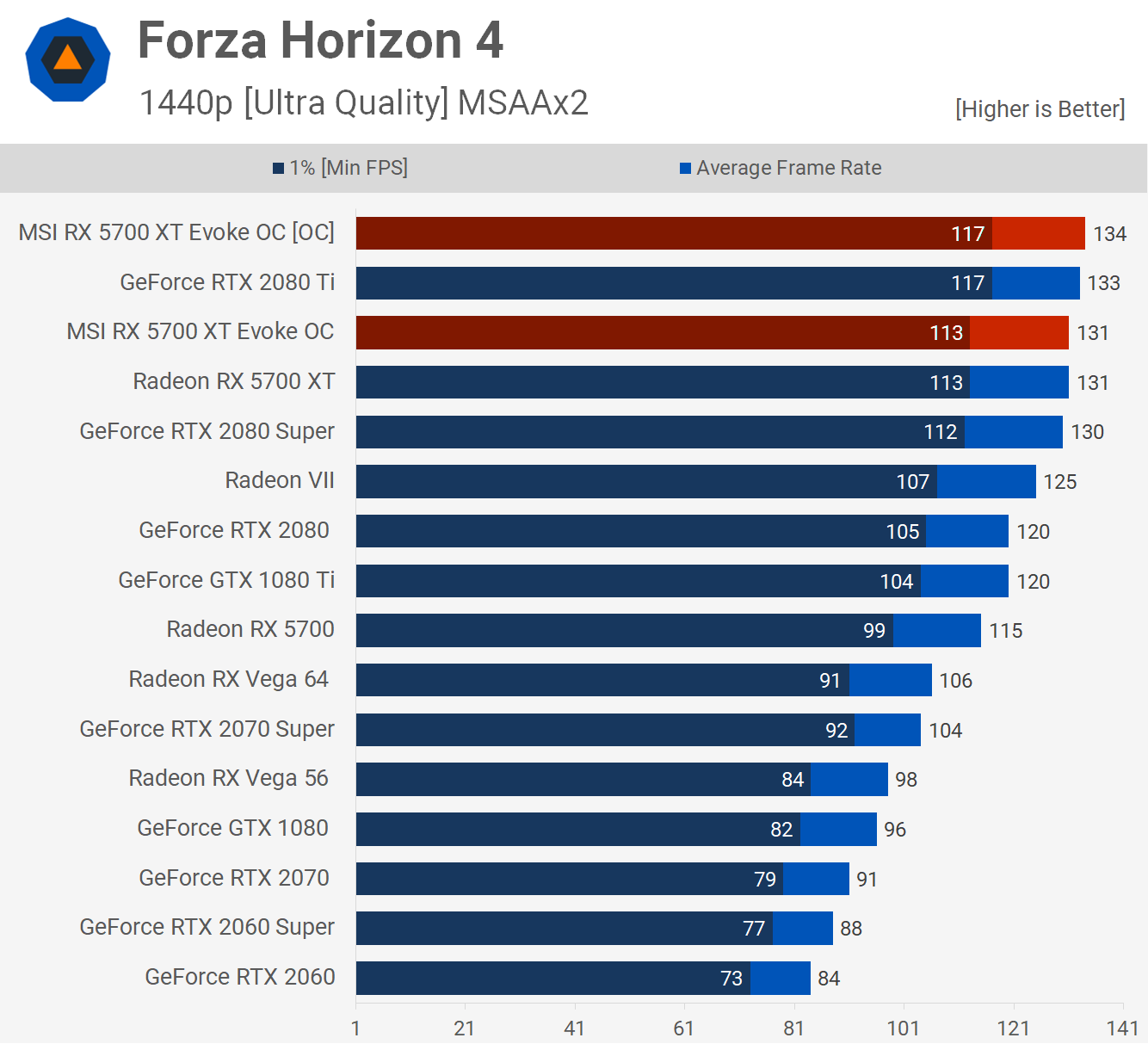
Again we see the exact same performance with the Evoke OC to that of the reference card in Forza Horizon 4, and overclocking only boosted frame rates by 2%. For those not up to speed, yes these results are correct. The RDNA GPUs absolutely kill it in Forza Horizon 4 but this isn't representative of how all games perform.

We see more typical 5700 XT performance in Shadow of the Tomb Raider. The Evoke OC matched the reference model and this time the overclock boosted performance by 5%, though nothing to get excited about.
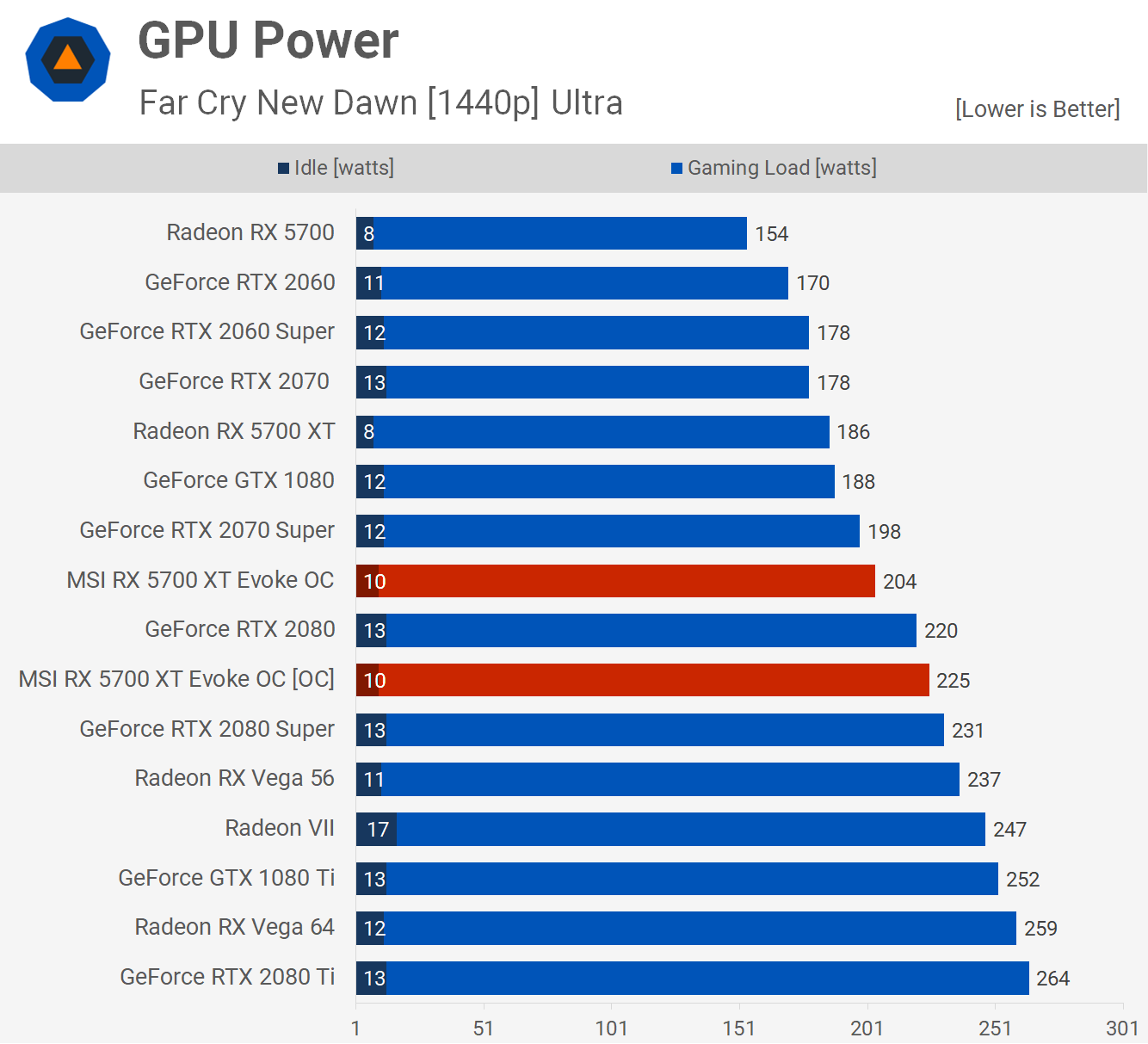
As we saw when looking at the thermal performance and operating frequencies earlier on, the Evoke OC pushes GPU consumption up over 200 watts, a 10% increase for no extra performance. Then our manual overclock increases consumption by a further 10%, for up to a 5% performance boost.

When taking the total system consumption into account the gains are less extreme, but even so whereas the reference model was only slightly more power hungry than the 2070 Super, the Evoke OC pushes past the RTX 2080.
Wrap Up
We had already tested the limits of the Radeon 5700 XT by overclocking it using liquid cooling and we knew there wasn't much to be had there. Performance is still solid, as is value, but what you gain from custom AIB boards is better cooling and quieter operation, hopefully for not much extra.
MSI's Evoke OC is a neat little card. There's also a non-OC version, known simply as the Evoke and MSI claims a 40 MHz difference in boost clock. In other words, they're the same product and we don't expect any difference in performance between the two. Therefore if the standard Evoke is a little cheaper than the Evoke OC, we'd just get that model. Unfortunately we won't know exact pricing details of all partner cards until they hit retail shelves sometime between this and next week, depending on the brand and model.
Where we were a little hesitant to recommend AMD's blower model, we are much more comfortable if you pick up a card with a better cooler. The Evoke OC is a little quieter and it's much cooler. We hope and expect cards like this will be anywhere from $10 to $40 extra over the reference cards at launch, which is fair, and depending on how the competition plays things out towards the holidays, we'll see them further discounted back to the $400 base pricing.
Shopping Shortcuts:
- AMD Radeon RX 5700 XT on Amazon, Google Express
- AMD Radeon RX 5700 on Amazon, Google Express
- GeForce RTX 2070 Super on Amazon, Google Express
- GeForce RTX 2060 Super on Amazon, Google Express
- GeForce RTX 2080 Ti on Amazon, Google Express
- AMD Ryzen 9 3900X on Amazon, Google Express
- AMD Ryzen 5 3600 on Amazon, Google Express
- AMD Ryzen 5 2600X on Amazon, Google Express

